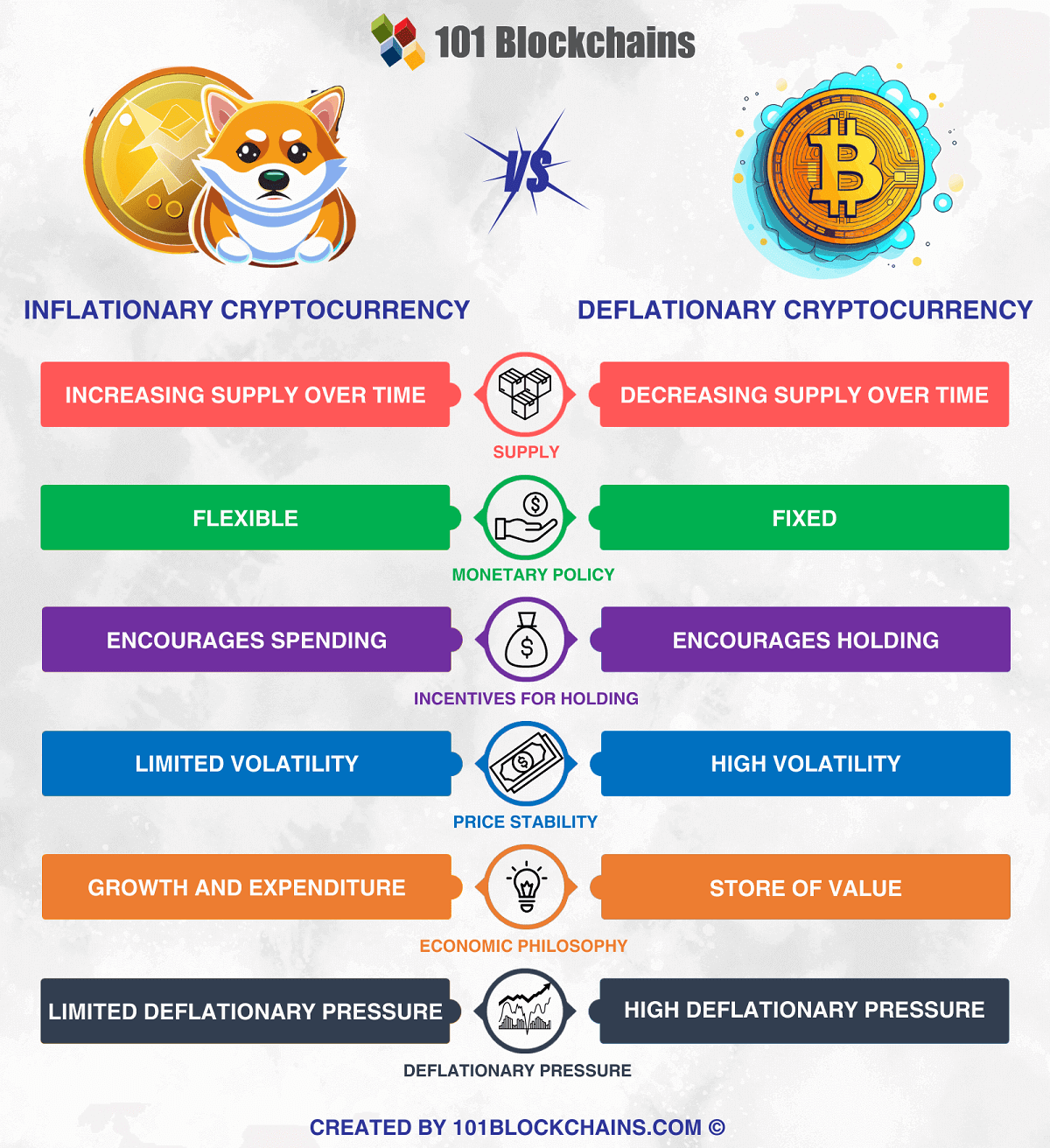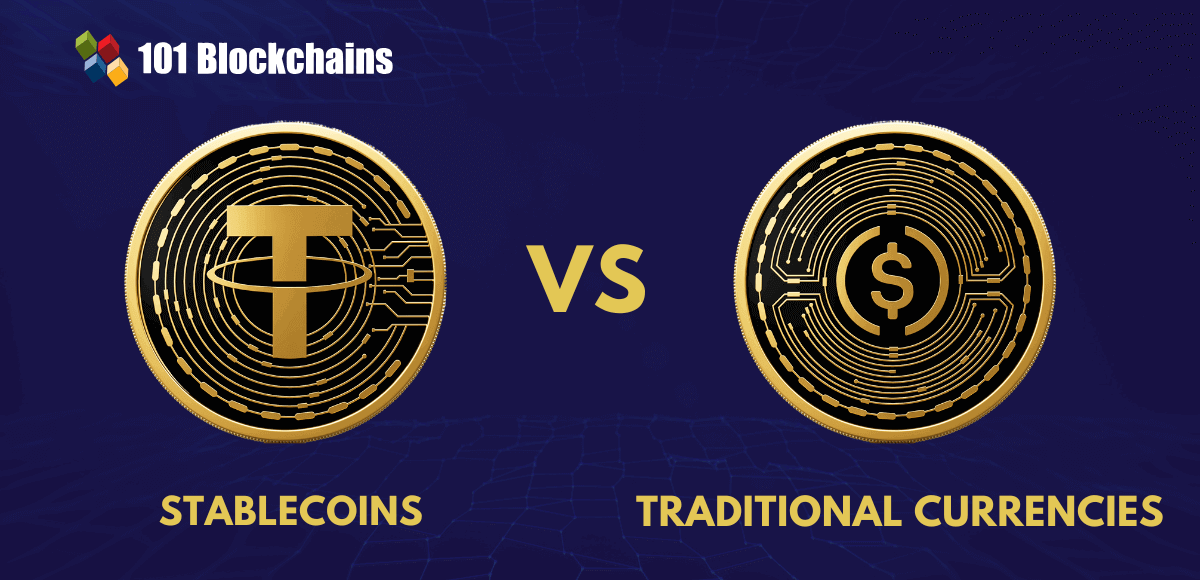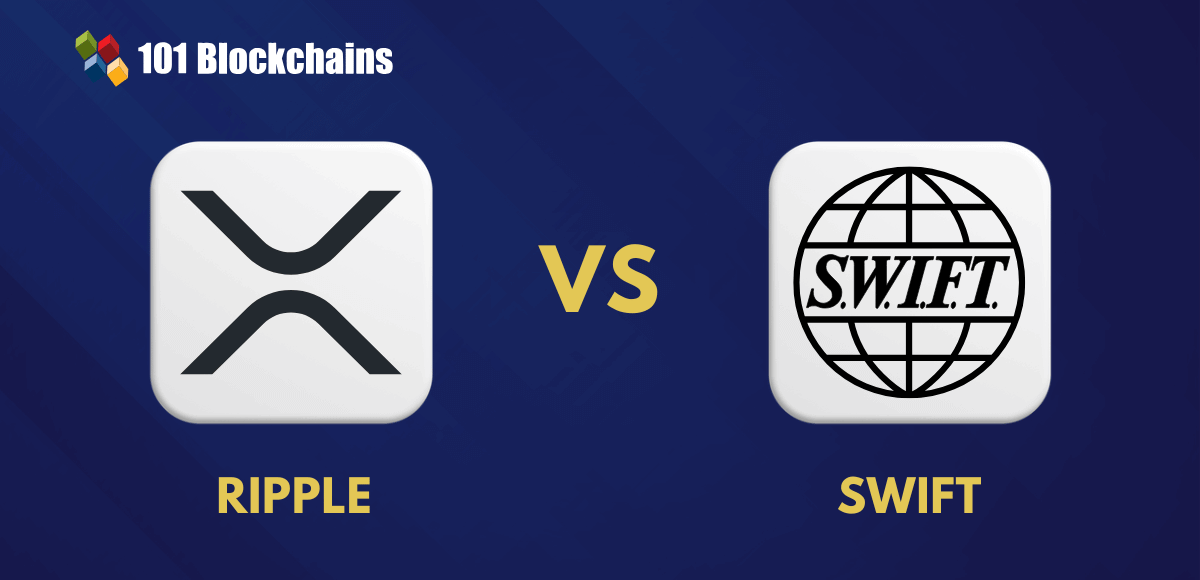Advance your career with in-demand Bitcoin expertise—enroll in the Certified Bitcoin Professional (CBP)™ Certification today.

- Comparisons
Georgia Weston
- on October 16, 2024
What is the Difference Between Inflationary and Deflationary Cryptocurrency?
Cryptocurrencies are the most valuable and riskiest assets for investors in the existing market. Many people are interested in adoption of cryptocurrencies as they provide assurance of higher returns as compared to other assets. The inflationary vs deflationary cryptocurrency debate has gained attention in the domain of cryptocurrencies as people wonder about the selection of the best cryptocurrencies for investment.
The availability of multiple options among cryptocurrencies presents challenges for making the final decision about investing in a specific cryptocurrency. Do inflation and deflation have any significance in the world of cryptocurrencies? Inflation refers to the reduction in purchasing power of money with the passage of time, which leads to higher pricing of products and services. On the other hand, deflation involves an increase in the purchasing power of money with time and leads to lower prices.
The concepts of inflation and deflation also work in the field of cryptocurrencies. You can find inflationary and deflationary cryptocurrencies following the same pattern as in conventional financial landscape. Inflationary cryptocurrencies are the ones with a continuously increasing supply over the course of time.
It can lead to loss of value due to reduced scarcity. On the other side of the spectrum, deflationary cryptocurrencies are characterized by decreasing supply with time. Therefore, the value of deflationary cryptocurrencies increases due to scarcity. Let us discover more about the differences between inflationary and deflationary crypto.
Build your identity as a certified blockchain expert with 101 Blockchains’ Blockchain Certifications designed to provide enhanced career prospects.
What are Inflationary Cryptocurrencies?
The best way to unravel the differences between deflationary and inflationary cryptocurrencies is to understand their definitions with clarity. In addition, you must also learn about the advantages of inflationary cryptocurrencies to strengthen your understanding of inflationary cryptocurrencies.
You can classify a cryptocurrency as inflationary due to the continuous increase in supply of coins over time. Inflationary cryptocurrencies utilize a combination of predefined inflation rates, mechanisms for token distribution, and supply constraints to maintain supply and offer incentives to participants.
Different cryptocurrencies have unique mechanisms for coin creation and market supply. Inflationary cryptocurrencies serve as a gradually increasing supply of coins in the cryptocurrency market. If you are looking to work on inflationary and deflationary cryptocurrencies, then you must pay attention to the predetermined rate of inflation set.
The predetermined rates indicate the rise in percentage in the total supply of the cryptocurrency over the course of time. In addition, the maximum supply of inflationary cryptocurrencies is generally fixed or variable. After reaching the maximum supply, you cannot mint the cryptocurrency anymore.
It is important to note that not all inflationary cryptocurrencies have a fixed cap on maximum supply. For example, Dogecoin had a maximum cap of 100 billion tokens. However, it removed the supply cap in 2014 and now offers an unlimited supply of DOGE tokens.
Want to get an in-depth understanding of crypto fundamentals, trading and investing strategies? Enroll now in the Crypto Fundamentals, Trading And Investing Course
Working Mechanism of Inflationary Cryptocurrencies
Inflationary cryptocurrencies work by distributing newly minted tokens to the network participants and leveraging dedicated consensus mechanisms. The consensus mechanisms play a vital role in mining new coins or distributing existing tokens to network validators. For example, Bitcoin uses the Proof of Work consensus in which miners receive rewards for solving puzzles to validate transactions. On the other hand, Proof of Stake consensus mechanism rewards validators for verifying the accuracy of a block.
The inflationary vs deflationary cryptocurrency debate would also draw attention to distribution of cryptocurrencies through governance decisions. For example, Decentralized Autonomous Organizations or DAOs can vote to release treasury funds, modify staking rewards, and establish vesting periods. All of these factors can influence the inflation rate of the cryptocurrency alongside the distribution of new coins.
Enroll now in the Bitcoin Technology Course to learn about Bitcoin mining and the information contained in transactions and blocks.
Examples, Pros and Cons of Inflationary Cryptocurrencies
Some of the notable examples of inflationary cryptocurrencies include Bitcoin Cash, Ripple, and Dogecoin. You must also notice the advantage of inflationary cryptocurrencies for a comprehensive comparison with deflationary cryptocurrencies. The most noticeable benefit of inflationary cryptocurrencies for investors is the potential for reduced volatility due to a larger supply. On top of it, the lack of scarcity also reduces the risk of hyper-deflation. The larger supply of tokens enables easier use in everyday transactions.
Inflationary cryptocurrencies also present some formidable challenges, such as limited potential for long-term price appreciation. In addition, inflationary cryptocurrencies are less appealing to long-term investors seeking a store of value with cryptocurrency. The larger token supply can also lead to setbacks in the form of higher risks for devaluation and inflation.
Excited to know the use cases of crypto in NFTs, DeFi, and the metaverse, Enroll now in the Cryptocurrency Fundamentals Course
What are Deflationary Cryptocurrencies?
The next important player in the debate between inflationary and deflationary cryptocurrencies, i.e., deflationary cryptocurrencies, are different from their counterparts in various ways. As the name implies, deflationary cryptocurrencies go through deflation over the course of time with a decrease in supply. Deflationary tokens utilize different mechanisms to reduce supply. The common methods for reducing supply of deflationary cryptocurrencies include coin burning or transaction fees.
Deflationary cryptocurrencies follow a predefined deflation rate encoded in the protocol. The deflation rate helps determine the percentage of reduction in the total supply of cryptocurrency over time. For example, a cryptocurrency can have an annual deflation rate of 2.5% when its total supply decreases by 2.5% every year. The answers to “What is the difference between inflationary and deflationary crypto?” also suggest that deflationary cryptocurrencies can have a variable or fixed maximum supply. Deflationary cryptocurrencies can also remove the maximum supply cap according to their needs.
One of the interesting details of deflationary cryptocurrencies is the fact that their economics is not affected by the incentives for stakeholders. The stakeholders, such as miners, users, and developers, may have different goals and motivations that can influence the supply and demand of the cryptocurrency. Miners can mine new coins and hold the newly mined tokens in bull markets rather than selling them. Similarly, removal of supply caps can lead to increased risks of manipulation.
Embrace the technological leap and global adoption that awaits in the upcoming bull run of 2024-2025 with Crypto Bull Run Ready Career Path.
Working Mechanism of Deflationary Cryptocurrencies
The ideal approaches to proceed further in the inflationary vs deflationary debate for cryptocurrencies draw attention towards working mechanisms. Deflationary cryptocurrencies can utilize indirect or direct mechanisms for destroying tokens in circulation. Some of the deflationary cryptocurrencies utilize transaction fees to encourage burning, which can reduce the total quantity of tokens in circulation.
Token burning can also involve the process of sending a certain amount of tokens to an inaccessible address. Deflationary cryptocurrencies also resort to other instruments to reduce the token supply, such as halving. For example, you can take a look at Bitcoin’s halving mechanism to understand its role in reducing token supply.
Get familiar with the terms related to cryptocurrency with our free Cryptocurrency Flashcards
Examples of Pros and Cons of Deflationary Cryptocurrencies
Notable examples of deflationary cryptocurrencies include Bitcoin, Ethereum, and Polkadot. It is also important to understand the advantages of deflationary cryptocurrencies to figure out why they are better than inflationary crypto. Deflationary cryptocurrencies present the best possibilities for long-term price appreciation owing to their increasing capacity. They are also ideal options for long-term investors seeking a reliable store of value. On top of it, deflationary cryptocurrencies also present a lower risk of devaluation and inflation.
Deflationary cryptocurrencies also present some setbacks, such as risks of hyper-deflation due to scarcity or higher volatility due to restricted token supply. The smaller token supply also makes deflationary cryptocurrencies less suitable for everyday transactions.
Start learning about cryptocurrencies with world’s first Cryptocurrency Skill Path with quality resources tailored by industry experts!
What are the Differences between Inflationary and Deflationary Cryptocurrencies?
Inflation helps in increasing the token supply of cryptocurrencies, thereby leading to more expenditure and network adaptability. On the other hand, deflation encourages scarcity and storage of value by reducing supply and increasing scarcity. Here is an overview of the difference between inflationary and deflationary cryptocurrencies on the basis of various important pointers.
-
Supply Mechanism
The supply of inflationary cryptocurrencies increases with the passage of time, while deflationary cryptocurrencies reduce supply over time.
-
Monetary Policy
Inflationary cryptocurrencies follow a flexible monetary policy, while deflationary cryptocurrencies are likely to go with fixed monetary policies.
-
Incentives for Holding
The prominent advantage of inflationary cryptocurrencies is the opportunity to spend more, as they don’t encourage holding. On the other hand, deflationary cryptocurrencies encourage holding as it reduces the supply of tokens in circulation.
-
Price Stability
Inflationary cryptocurrencies are less volatile, while deflationary cryptocurrencies are more volatile.
-
Economic Philosophy
The economic goal of inflationary cryptocurrencies revolves around fostering growth and spending. On the other hand, the advantage of deflationary cryptocurrencies focuses on their economic goal of serving as a store of value.
-
Deflationary Pressure
Inflationary cryptocurrencies experience limited pressure for deflation, while deflationary cryptocurrencies experience strong and scarcity-driven pressure for deflation.
Here is an overview of the differences between inflationary and deflationary crypto.

Final Words
The answers to “What is the difference between inflationary and deflationary crypto?” showcase that each variant has distinct advantages. At the same time, they also have their unique setbacks. The simplest way to understand the difference in an inflationary vs deflationary cryptocurrency debate is the supply mechanism. The supply of inflationary cryptocurrency increases over the course of time, while deflationary cryptocurrency has a decreasing supply to encourage scarcity. Learn more about inflationary and deflationary crypto to make the right choice.
*Disclaimer: The article should not be taken as, and is not intended to provide any investment advice. Claims made in this article do not constitute investment advice and should not be taken as such. 101 Blockchains shall not be responsible for any loss sustained by any person who relies on this article. Do your own research!





